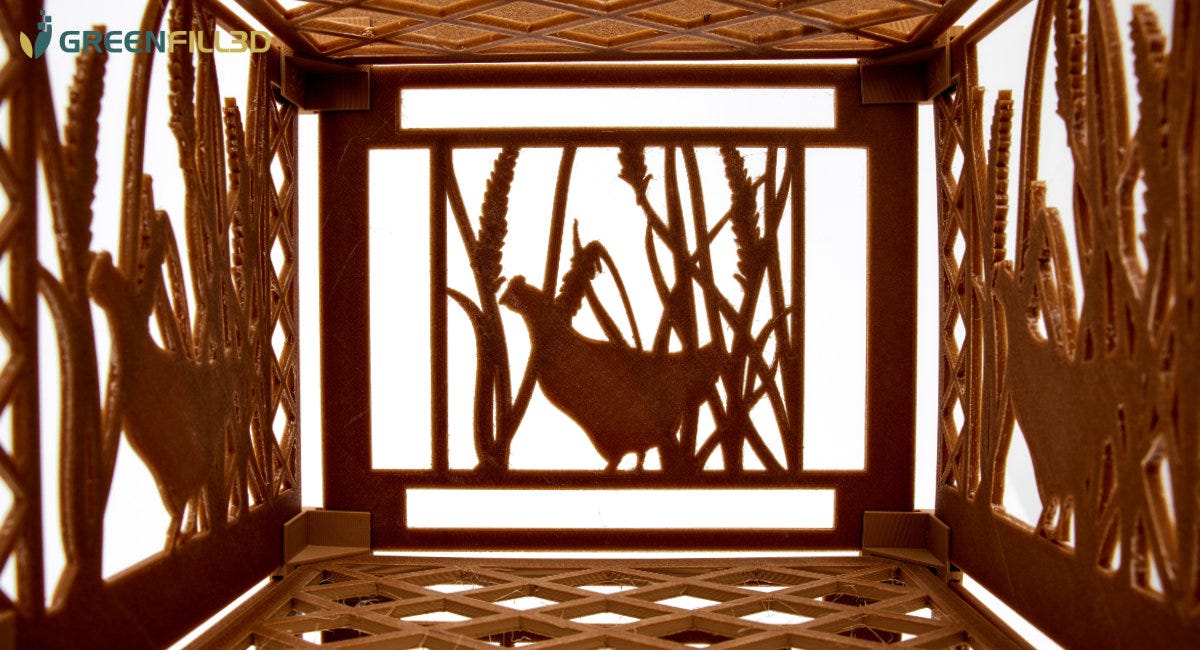02-03-2022: GREENFILL3D introduced a biodegradable filament made from wheat bran derived from pasta production
The company also presented a 3D-printed advertising stand promoting that same pasta
On February 3, 2022, the Polish startup GREENFILL3D presented the world's first biodegradable filament based on wheat bran, a byproduct of pasta production. At the same time, the company introduced a modular advertising stand, entirely 3D printed using FFF technology, designed to showcase the same pasta from which the production waste was used to create the filament. It was the perfect Zero-Waste & Circular Economy cycle.
Founded in July 2021, GREENFILL3D’ mission was to develop bio-based materials—natural raw materials processed in a way that made them biodegradable.
These materials took the form of filaments used in FFF 3D printers. The partner for this innovative project was MASPEX Group—the largest food producer in Poland and Central Europe. MASPEX provided the wheat bran used in the filament’s production, which came from the production of Lubella pasta—a brand owned by the company.
The material, named "GF3D Branfill3D," was a composite of wheat bran, polylactic acid (PLA), and other fully biodegradable ingredients that gave it unique properties. The 3D-printed parts made from this material were resilient and, to some extent, flexible (depending on the wall thickness), making them quite difficult to break.
A significant factor contributing to these properties was the fibrous structure of the wheat bran, which provided the 3D-printed parts with both resilience and a smooth surface finish. What’s more, during the 3D printing process, the material emitted the scent of freshly baked bread, which remained on the printed parts for a long time. Depending on how the printed items were stored, they gradually degraded—moisture significantly accelerated this process.
In addition to the filament, a modular advertising stand—ECO POS (Point-of-Sale Display)—was designed to showcase Lubella pasta. Each ECO POS consisted of 36 elements—all walls and shelves were made from wheat bran, while the connectors were made of PLA. The stand was designed to be assembled and disassembled in-store, with compact packaging that made transportation easy.
In total, several hundred ECO POS units were produced and placed in Kaufland hypermarkets across all major cities in Poland.
The project was a major success. GREENFILL3D received numerous awards and recognitions for it. Unfortunately, the company's subsequent projects—despite being highly praised for their design and innovation—did not translate into financial success.
Additionally, the ECO POS project was put on hold due to the inability to match the large-scale production expectations of major retail chains with the efficiency of FFF technology (with a production capacity of 1,000-2,000 ECO POS per month, equivalent to 36,000-72,000 individual parts). Currently, GREENFILL3D is on hiatus.
Source: www.greenfill3d.com







